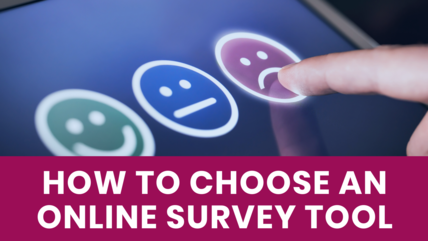We are big fans of making digital work on a shoestring so finding out that this easy-to-use audio website and app was free was a real thrill.
Audioboom is a brilliant spoken-word website for organisations of all kinds to record, upload and share audio recordings with their audiences. It’s used by the tiniest community groups right up to large broadcasters like the BBC.
The Audioboom app is available on many Apple and Android devices so you can record anytime and anywhere. Perfect for getting quick feedback at events, recording a quick chat at a drop in and getting opinions and ideas over a number of sessions about what’s working in your services.
Setting up Audioboom is easy
Simply go to Audioboom.com and create your free account. Once you have the app on your smart phone you are up and running in under an hour.
You can make as many recordings as you like, but if you want to record for longer than 10 minutes you’ll need to upgrade to a different paid package. Each 'post' you create is made up of an audio recording, a picture, a location, a title and a description.
How can audio be used to demonstrate impact?
At Superhighways we’ve used Audioboom as a self-evaluation tool for our learners so they can measure the distance they have travelled from their first day of training to how they feel at the end of it.
It’s helped us put together case studies for our funder, forming part of our wider monitoring and evaluation. Just like You Tube, Audioboom also gives you an embed code for each of your audio clips so that you can breathe life into your stories on your own website.
Like this:
We’ve even used the audio and photos taken over a period of time to create audio slideshows for our annual review and AGM – and this re-use of material is truly how smaller charities can COPE (Content Once, Publish Everywhere) with limited time and resources.
Top 5 tips for audio-recording:
- Smart phones are easier to use than tablets to record with – you can get the microphone closer to the person you’re interviewing without being too intrusive.
- It’s not a must have but try to budget for a lapel microphone. You can pick a decent one up for around £40.
- Unless you want some background sound to create atmosphere try and find quiet places to record – tiled walls and empty rooms can make recording sound hollow, stay off that squeaky sofa and leave your jingling jewellery at home.
- We were told by the BBC Listening Project that if you’re using a smart phone and want maximum quality sound then to wrap it in a sock and stick it in a large glass tumbler. The tumbler amplifies the sound and the sock will stop it sounding tinny.
- If your interviewee is wary about having their photo taken offer to take a photo of anything in the room or find a relevant photo online that they’d be happy to use as their profile picture – keep your interviewee involved in the process and they’ll feel more comfortable talking
Stay in touch
If you would like to receive news and updates about training, tech tips, resources and opportunities for small charities and community groups in London please sign up to our mailing list.




